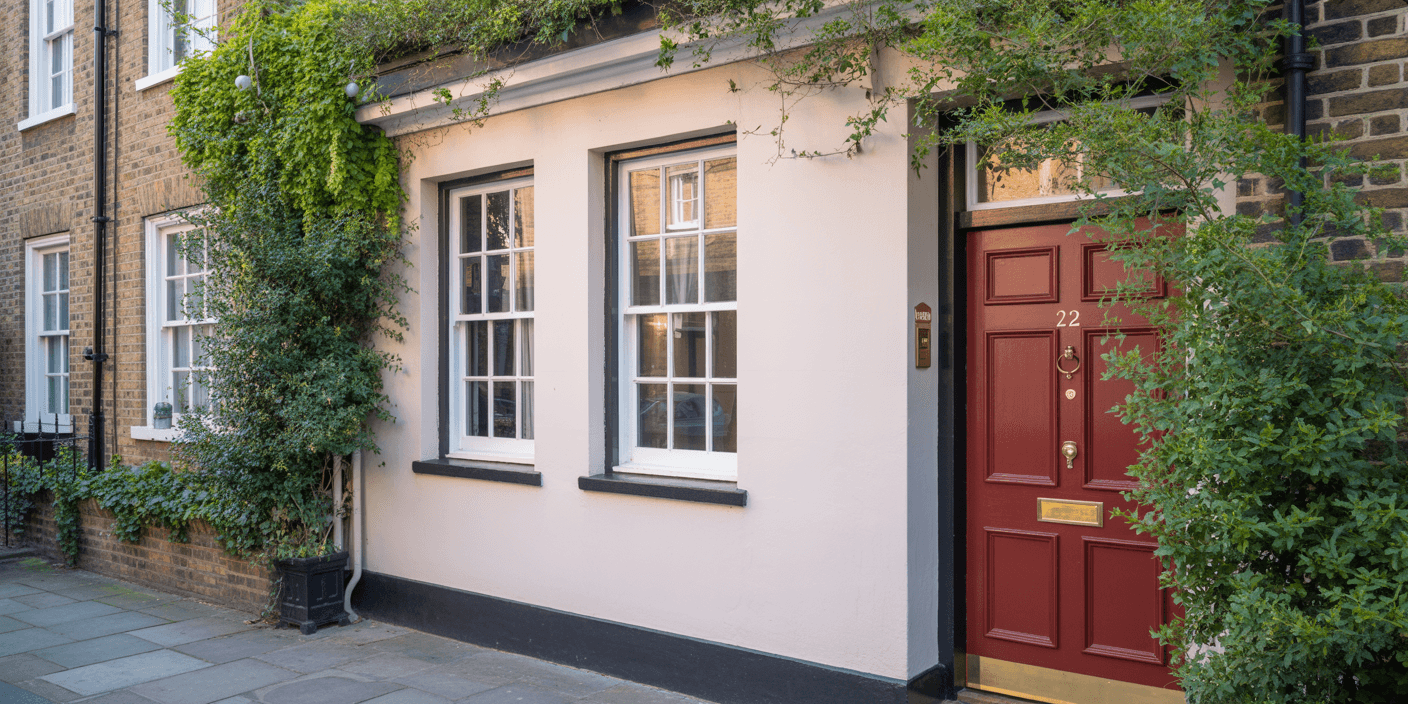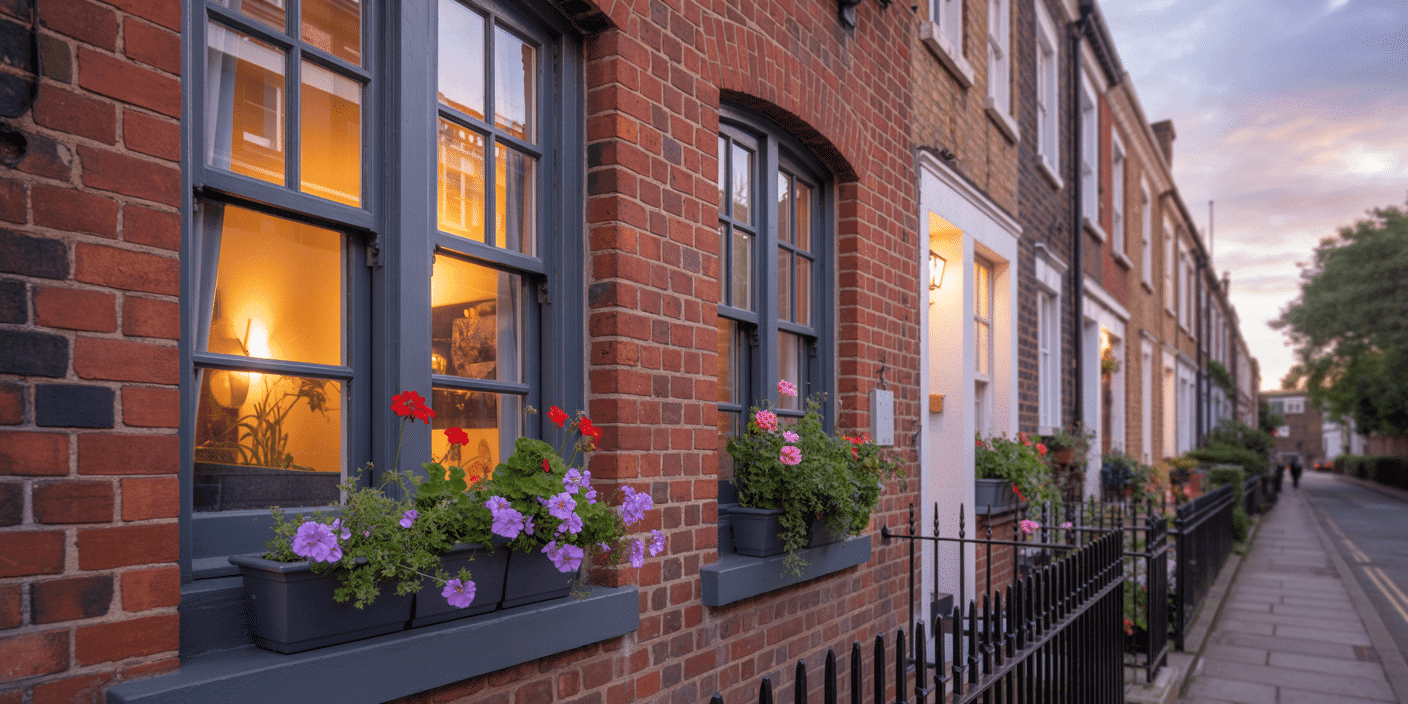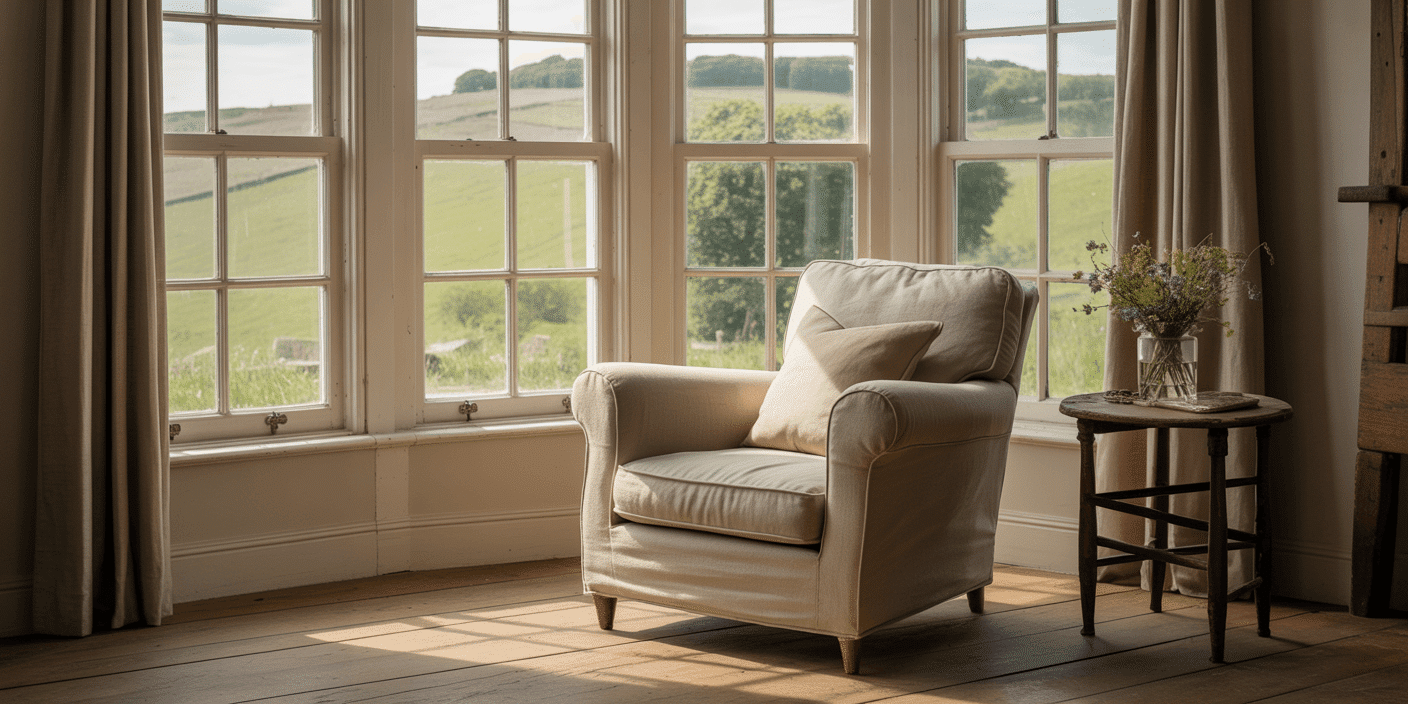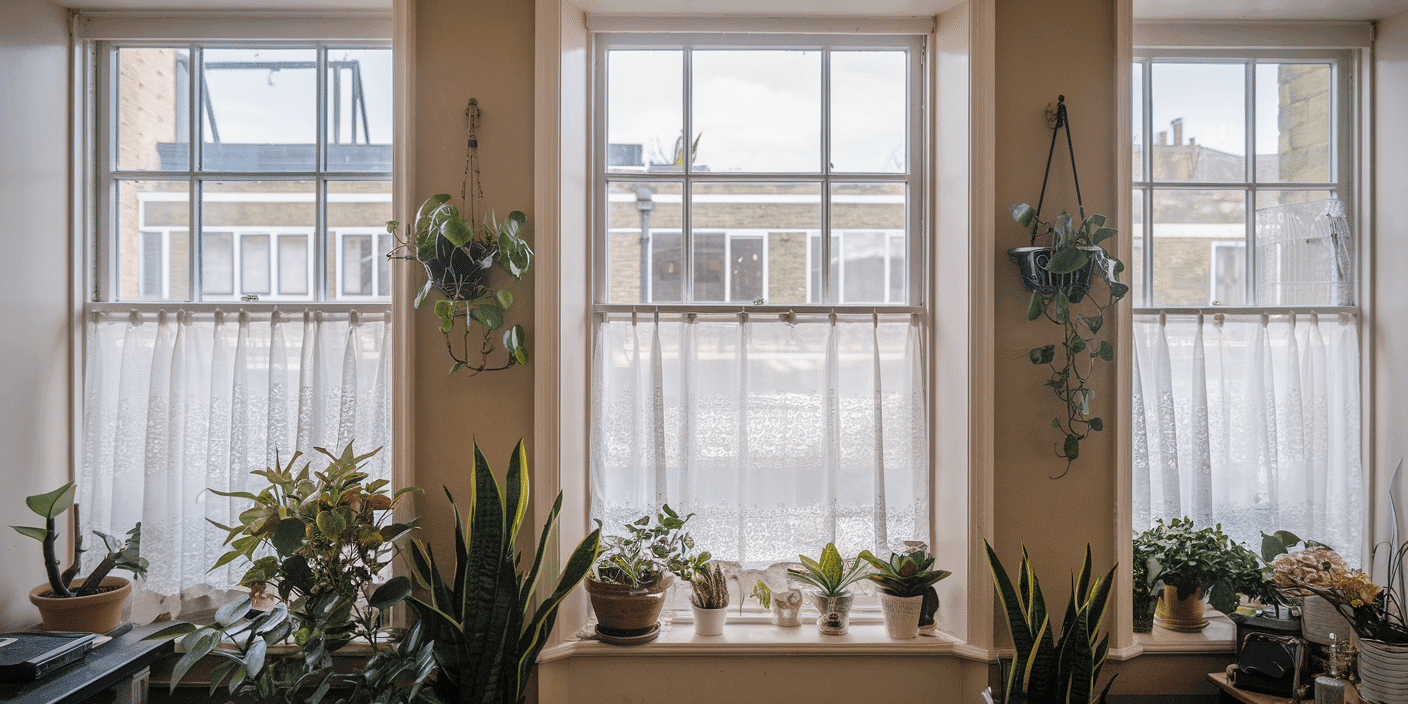The Invisible Leak Draining Your Home
Every winter, a familiar pattern unfolds.
The central heating rises to meet the cold, the radiators work tirelessly — and yet, a subtle chill lingers near the windows.
This is not due to a faulty boiler or poor insulation.
It is the result of something less visible but far more costly: your windows’ thermal performance, measured by a single, decisive number — the U-value.
In technical terms, the U-value quantifies how much heat escapes through a building element.
In practical terms, it determines how much you overpay on energy every year.
Even in well-maintained period homes, outdated or underperforming glazing can account for up to 40% of total heat loss.
From the kerb, your home may appear immaculate. Inside, however, heat — and money — may be quietly seeping away.
This loss is not dramatic. It does not rattle or groan.
It simply leaks, hour by hour, season by season — driving up bills, reducing comfort, and eroding long-term value.
The U-value is the metric that governs this process.
And for most homeowners, it remains unseen, unmeasured, and unchallenged — until the cost becomes impossible to ignore.
What Is a U-Value — and Why It Matters to You
Let’s cut through the jargon.
A U-value is the measure of how well a material — in this case, your window — keeps heat from escaping.
The lower the number, the better the insulation. Simple as that.
Think of it like the tog rating on a duvet or the miles-per-gallon on a car: a shorthand for performance.
The lower the U-value, the more warmth your window keeps inside — and the less your heating system has to work.
Most older single-glazed windows have U-values of 4.8 or higher — like wearing a paper-thin jacket in December.
Basic double glazing might drop that to 2.8, which still falls short of today’s efficiency expectations.
But the latest high-performance systems — the kind designed with Part L and Passive House standards in mind — can go as low as 1.2, 1.0, or even below 0.8 W/m²K.
That’s the difference between your home gently retaining warmth…
or constantly fighting the outside air with your money on the front line.
If your windows are performing at U-values above 2.0, you’re not just losing heat — you’re losing control.
Control over your energy bills.
Control over your comfort.
Control over your home’s long-term value.
And yet, thousands of homeowners across London are still living with windows that belong to another century — because no one ever told them how powerful this one number really is.
Until now.
How Much Heat (and Money) Are You Losing Right Now?

Let’s get brutally specific.
If your home still has original single-glazed sash windows, you could be losing up to 60% more heat than necessary — every hour, every day, all winter.
And that’s not abstract. That’s money, leaving your account.
| Glazing Type | Typical U-Value | Estimated Annual Heat Loss |
| Single Glazed (Pre-1980s) | 4.8 – 5.8 W/m²K | £500+ / year |
| Early Double Glazed (1990s–2000s) | 2.7 – 3.1 W/m²K | £350–£450 / year |
| Modern Double Glazed (Post-2010) | 1.4 – 1.8 W/m²K | £200–£300 / year |
| High-Performance Double Glazed | 1.2 – 1.0 W/m²K | £100–£200 / year |
| Triple / Passive Glazing | 0.8 – 0.6 W/m²K | Minimal annual loss |
Even among well-off homeowners, most don’t realise they’re heating the street with every boiler cycle.
Why? Because the glass looks clean, the frame is painted, and there’s no howling draught.
But performance doesn’t shout — it leaks.
Here’s the kicker:
Every winter you delay upgrading, you’re paying for the windows you haven’t installed yet.
At today’s energy rates, switching from old double glazing to a proper high-performance sash system can save over £200 per year — without touching your boiler.
And this isn’t just about lower bills.
Better U-values mean better EPC ratings, higher resale value, and compliance with upcoming Part L standards — all baked into one smart upgrade.
This is why the most discerning homeowners in London are no longer asking if they should upgrade — but what U-value their next windows will deliver.
Comfort Isn’t a Luxury — It’s an Engineering Choice
Luxury isn’t marble countertops or velvet drapes.
It’s walking barefoot across your home on a January morning — and feeling nothing but warmth.
That level of comfort isn’t accidental. It’s not just down to your boiler or insulation.
It’s the result of something far more overlooked: your windows’ U-value.
High-performance glazing — the kind engineered by specialists — doesn’t just save energy.
It changes how a room feels.
Gone are the cold zones near the bay.
Gone are the draughts along the floorboards.
Gone is that subtle, constant tension between the inside and the outside.
Instead, your home becomes stable. Predictable. Peaceful.
The temperature doesn’t fluctuate every time the sun sets or the wind changes.
The heating system works less, and your rooms stay even.
Your home becomes a space you don’t just live in — but relax in.
And it’s not just heat.
Well-built, low U-value windows reduce external noise, cut condensation, and improve the overall air tightness of your property.
You feel it in the quiet. You feel it in the calm. You feel it in the bills that stop climbing.
All of it achieved with design-led, regulation-ready windows that blend into the very architecture you fell in love with in the first place.
This isn’t wishful thinking. It’s engineering — done right, and done beautifully.
The Regulatory Reality: Part L and the U-Value Countdown
You may not follow changes in building regulations.
But they’re following you — and soon, they’ll be knocking on your door.
The UK’s Part L regulations — the rules governing the thermal performance of homes — are tightening. Quietly, steadily, and unavoidably.
Today, any replacement windows must achieve a U-value of 1.4 W/m²K or better.
By 2025, that benchmark is expected to drop even further as the government moves towards the Future Homes Standard — a nationwide push for energy-efficient housing stock.
Ignore it, and you risk:
- Failing to meet compliance on refurb projects
- Lowering your home’s EPC rating
- Undermining its resale and remortgage value
- Watching utility costs climb every quarter while future-proof homes leave yours behind
Whether you’re renovating a period townhouse or upgrading a modern detached, your windows are under scrutiny — and not just by surveyors.
Buyers now look for EPCs as closely as square footage.
Banks are aligning mortgage products to energy performance.
Planners and developers are facing stiffer penalties for non-compliance.
In this climate, a low U-value isn’t a luxury — it’s your entry pass to the next decade of homeownership.
The good news?
Companies like Sash Windows London have been designing for this moment for years — crafting windows that don’t just meet today’s requirements, but exceed tomorrow’s.
So while others are scrambling to adapt, you can be calmly confident — warm, compliant, and ahead of the curve.
Do I Have to Compromise on Style or Aesthetics?

For many homeowners, it’s the question that stops them in their tracks:
“Will new windows ruin the look of my home?”
It’s a fair concern — and it’s why thousands put off upgrading.
But it’s also based on an outdated choice: performance vs beauty.
Today, that choice no longer exists.
Thanks to advancements in window engineering and joinery craftsmanship, you can now install high-performance glazing in windows that are visually indistinguishable from their original counterparts.
Yes, even traditional box sash windows.
Yes, even in conservation areas.
Yes, without plastic, metal, or eyesores.
Here’s how it’s done:
- Slimline double-glazed units that sit neatly within historic sightlines
- Low-emissivity glass with warm-edge spacer bars to retain the original elegance
- Timber frames that preserve the character of period properties — often finished in heritage colours and ironmongery
- Brush seals and thermally broken components are invisibly integrated for silent, efficient performance
From the street, no one will notice a thing.
From the inside? You’ll notice everything — quieter rooms, warmer spaces, cleaner air, and lower bills.
This is where specialist companies shine.
They don’t force you to choose between Part L and Georgian beauty, between draught-sealing and sash horns.
They’ve spent years perfecting systems that do both — marrying craftsmanship with compliance, tradition with thermal logic.
So no, you don’t have to compromise.
You just have to choose a team that knows how to deliver both.
What Makes a True High-Performance Window?
At first glance, all windows look the same: clear glass, painted frame, clean lines.
But performance lives in the details — and if you’re serious about thermal control, those details matter.
Not all double glazing is created equal.
And not all “energy-efficient” claims hold up to scrutiny.
So what exactly separates an average window from a true high-performance system?
Let’s break it down.
1. Low-E Glass (Low Emissivity Coating)
This microscopic coating reflects heat back into your home while letting sunlight pass through.
It’s invisible — but essential. Without it, your window is just a transparent radiator.
2. Gas-Filled Cavities (Usually Argon or Krypton)
Between the panes, inert gas slows heat transfer.
Air-filled gaps don’t cut it anymore. Properly sealed argon-filled units cut heat loss by up to 30%.
3. Warm Edge Spacer Bars
These separate the panes and reduce cold bridging at the edges — often the first place condensation forms.
They’re subtle, but they sharply increase efficiency and longevity.
4. Precision Joinery and Sealing
You can’t bolt performance onto a poorly built frame.
Thermally broken sashes, compression seals, and brush draught strips — all must be purpose-built into the frame.
5. Regulatory Compliance Built-In (Part L, Part Q, PAS24)
A proper high-performance window doesn’t just perform thermally. It also meets modern standards for security, ventilation, and conservation — without cutting visual corners.
Now, here’s the reality:
Big box suppliers and budget fitters don’t build windows like this.
They build windows for mass metrics — not for London homes with character, heritage, and resale at stake.
That’s why discerning homeowners and architects work with specialist joinery firms — the ones who live and breathe sash geometry, balance boxes, and multi-layer coatings.
Because in a high-performance window, everything works together: the timber, the cavity, the coating, the fit, the finish.
And when it does, you don’t just get a better window.
You get a better home.
Don’t Let Another Winter Leak Through Your Windows
The weather doesn’t wait.
And neither do rising bills.
Every week you delay upgrading your windows is another week of lost warmth, lost money, and lost value — flowing quietly out of your home through panes that can’t perform.
Now you know the number: U‑value.
Now you understand what it means.
And more importantly, now you know what it costs to ignore it.
If your windows are over a decade old — or if you’re living with original single-glazed sash — you’re almost certainly paying more than you should.
Not just in gas. Not just in lost efficiency.
But in comfort, in regulatory risk, and in the resale value of your home.
But there is a way forward. A better way.
At Sash Windows London, we specialise in timber systems that deliver Part L performance — without sacrificing heritage charm.
You get the warmth, the silence, the savings… and the window your home deserves.
✅ U-values as low as 1.2 W/m²K
✅ Made to measure, Part L compliant
✅ Suitable for conservation areas
✅ Designed, installed, and backed by a specialist team
Ready to See What Your Windows Are Really Costing You?
Book your Free Thermal Audit and U-Value Assessment today.
We’ll tell you what’s leaking, how much it’s costing, and how to fix it — beautifully.
Don’t settle for “just a window.”
Choose a system that performs, protects, and pays you back.
Book your consultation →
Request a free U-value report →
Speak with a heritage performance expert →







